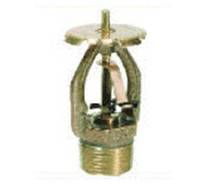|
Phone: 855-990-FIRE(3473) Fax: 855-858-FIRE (3473) 407 Rt.,130 South Cinnaminson NJ 08077 |
|
Frequently Asked Questions |
|
Copyright 2011 Midlantic Fire Company, Inc., All Rights Reserved |
|
Midlantic Fire Our specialties: Backflow, installations and certifications, Special hazards, Fire hydrants Services, Underground service, Fire Extingushers. Full Inspection Services Including: Wet or Dry, Pre-action/deluge, Fire pumps, Clean agent system,Water tanks internal/external , Fire hydrants, Fire alarm systems. In addtion: Fire protection Services, Engineering/Design, commerical, Residential/Industrial, Tenant Fit-out/Modifications.
|

|
“Large enough to serve. Small enough to care”
|
What is an automatic fire sprinkler system?The automatic fire sprinkler system is the most widely used fire protection system today. The whole philosophy of sprinklers is based upon the premise of applying the right amount of water (as little as possible) in the right place (the seat of the fire) at the right time (as quickly as possible). Many ordinary hazard systems used to be fed directly from the town’s mains, but increasingly a water tank and pumps are being installed to guarantee adequate water flow and pressure. · WET · DRY · PRE-ACTION · DELUGE
What is a WET fire sprinkler system?The fire sprinkler system is constantly charged with water under pressure, which holds the fire sprinkler valve in the closed position. When a fire sprinkler head is activated water instantly flows on to the fire. A wet fire sprinkler system is commonly installed in areas where the ambient temperature is above 32 degrees F.
What is a DRY fire sprinkler system?Used where a frost risk may arise, the dry fire sprinkler system is constantly charged with compressed air, which holds the fire sprinkler valve in closed position. When a fire sprinkler head is activated, the air pressure is lost, the valve opens and water flows into the system and on to the fire. A dry fire sprinkler system is commonly installed in areas where the ambient temperature is at or below 32 degrees F.
What is a PRE-ACTION fire sprinkler system?A combination of an electrical/mechanical detection system, charged with compressed air, sprinkler pipes are only filled with water upon electrical detection to avoid accidental water damage. A pre-action fire sprinkler system is commonly installed in high-risk areas such as data processing facilities or cold storage warehouses.
What is a DELUGE fire sprinkler system?A combination of an electrical/mechanical detection system, fire sprinkler heads are open and the pipe is not pressurized. When the detection system is activated water discharges through all of the sprinkler heads in the system. A deluge fire sprinkler system is commonly installed in high-risk areas such as power plants, aircraft hangars, and chemical storage or processing facilities.
How are fire sprinkler heads rated?Each fire sprinkler head is rated for certain degree, depending on its application. For example if a fire sprinkler head is rated for 155 degrees, as soon as the surrounding temperature reaches 155 degrees the bulb will burst and thus engage the fire sprinkler system.
How do I know my fire sprinkler system will work?The laws set forth by your local fire department and the National Fire Protection Association (NFPA) protect you by making sure that all fire related systems are tested at regular intervals to insure proper operation of that system.
Does the fire sprinkler system need to be certified?YES. In most jurisdictions automated sprinkler systems should be certified annually. Check with Basic Fire Protection, Inc. or your local Fire Department. Should I have my fire sprinkler system tested?YES. The backflow services need to be tested annually. Your local Fire Department will notify you.
Fire Sprinkler Facts· The chances of a fire sprinkler accidentally going off are extremely remote. · Fire sprinkler heads are heat-activated. · Smoke does not activate the fire sprinkler head. · Each fire sprinkler head is rated for a certain degree depending on its application. · Each fire sprinkler discharges individually, all fire sprinklers do not diffuse at once. · Residential fires are usually controlled with one fire sprinkler head. · 90% of all fires are controlled with six or fewer heads. · Quick response fire sprinklers release 8-24 gallons of water per minute compared to 50-125 gallons per minute released by a fire hose. · Property losses are 85% less in residences with fire sprinklers compared to those without sprinklers. · Water damage from a home fire sprinkler system will be much less severe than the damage caused by water from fire-fighting hose lines or smoke and fire damage if the fire goes unabated. · Installation of fire sprinklers can provide discounts on insurance premiums.
|

